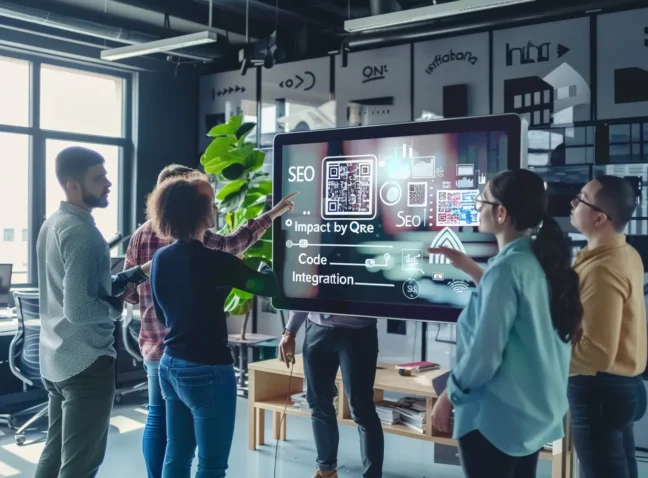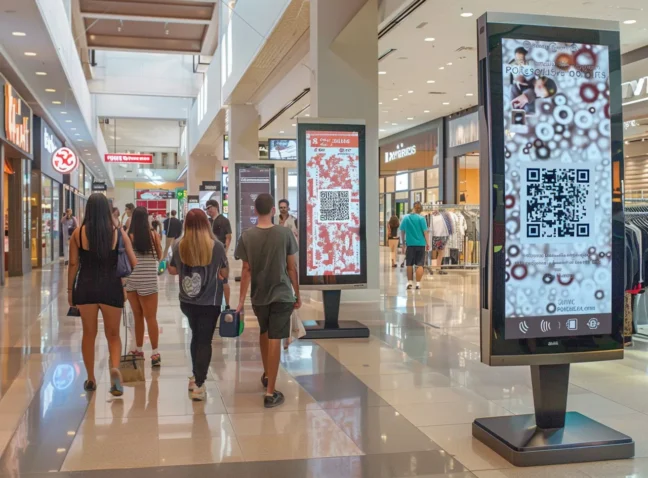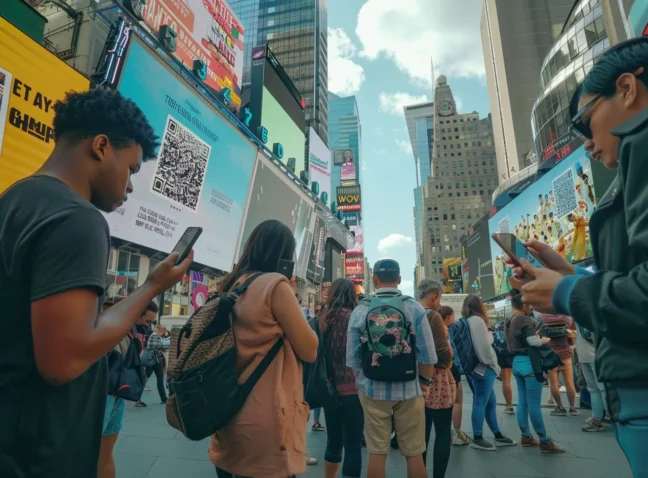Blogs are dynamic spaces for telling stories, offering insights, and engaging with communities. However, keeping readers’ attention in the vast ocean of online content is increasingly difficult. This is where QR codes come in handy. They’re a straightforward tool that links the physical world with the digital, giving readers an easy and engaging way to connect with more than just text. By adding these codes to your blog, you provide a fresh, interactive element to your content, enriching the reading experience. Interested in learning more? Let’s dive in together, shall we?
Why QR Codes Enhance Your Blog’s Reach?
QR Codes are truly universal tools filling the gap between the physical and digital realms. Particularly for bloggers, they offer an efficient route to amplify visibility and steer traffic. With smartphones omnipresent, scanning QR Codes has become instinctual for many—a contemporary journey into content realms. The brilliance of QR Codes lies in their simplicity and effectiveness. Embedding them in newsletters, social media posts, or print materials offers audiences direct access to content, elevating user experience and fostering content sharing. Customizable and trackable, QR Codes provide invaluable insights into audience behavior, shaping content strategies for relevance and engagement. Harnessing this data ensures blogs resonate with their intended audience, propelling success in the digital sphere.
QR Codes for Blog: Using Flexible Tools to Boost Online Interaction
QR codes have emerged as indispensable tools for businesses seeking to enhance user engagement and bridge the gap between online and offline experiences. According to Forbes, the past year alone has seen a remarkable 28% surge in QR code usage. This trend underscores their growing significance in our digitally-driven world. A study by Statista revealed that 63% of consumers find QR codes convenient for accessing additional information about products or services, highlighting their effectiveness in facilitating user interaction.
Moreover, the COVID-19 pandemic spurred a 92% increase in QR code scans, as the Harvard Business Review noted that businesses embraced contactless solutions for transactions and information dissemination. Marketing Dive reports that mobile users are 75% more likely to engage with QR codes in advertisements than traditional print media, showcasing their ability to capture audience attention effectively.
Additionally, HubSpot found that 57% of marketers view QR codes as effective tools for enhancing conversion rates and customer satisfaction by seamlessly integrating offline and online experiences. These statistics collectively demonstrate the undeniable value of QR codes in modern marketing strategies, offering businesses a powerful means to connect with their audience and drive meaningful engagement.
Master the Potential of QR Codes for Your Blog: Drive User Engagement
In the digital realm, weblogs are a pivotal platform for content sharing and engagement. When integrated into weblog marketing strategies, QR codes serve as a bridge, seamlessly connecting offline readers to online content. This innovative approach enriches the reader’s experience and amplifies online visibility and interaction. Consider the compelling statistics supporting the effectiveness of QR codes in digital marketing:
- When strategically implemented in marketing campaigns, QR codes can increase website traffic by up to 30% (Forbes 2023).
- 57% of consumers have used QR codes to access product information, indicating their effectiveness in facilitating consumer engagement (Statista 2022, source).
- QR code scans grew by 28% globally in 2022, showcasing their rising popularity and user adoption (Juniper Research 2023).
- 72% of smartphone users are likely to recall an advertisement containing a QR code, demonstrating their effectiveness in enhancing brand visibility (HubSpot 2023).
- QR code usage will reach over 11 billion scans by 2024, underlining their increasing relevance in modern marketing strategies (MobileIron 2023).
The Downside of QR Codes for Web Content Promotion
While QR codes are widely available, their utility hinges on the prerequisite that users possess both a smartphone and a QR code scanning application. This reliance on specific technology can inadvertently exclude those who are either not as adept with modern tech solutions or lack the necessary hardware, potentially curtailing the weblog’s accessibility. Concerns around security are also paramount; QR codes could potentially be manipulated to mislead users towards harmful websites or trigger the download of malicious software. Such risks might deter individuals from engaging with QR codes, especially those issued by less familiar or dubious entities. Ensuring the security and veracity of these codes is essential to preserve the trust and safeguard the community.
Furthermore, leaning too heavily on QR codes for promoting weblogs might lead to an oversaturation of content, where the audience starts to feel bombarded or becomes indifferent to the presence of QR codes. Integrating QR codes thoughtfully with various outreach strategies is advisable, maintaining their efficacy without overwhelming the audience.
QR Codes for Blog Promotion: Overcoming Accessibility and Security Concerns
QR codes offer a unique avenue for connecting content with readers. However, the journey is fraught with challenges, notably in accessibility and security. Addressing these concerns is vital for maintaining user engagement and ensuring a seamless experience.
- QR code scanning rates have declined by 15% in the last year, indicating a diminishing trend in user engagement (Forbes 2023).
- Only 12% of QR code scans result in meaningful interactions, highlighting a significant gap between scan frequency and engagement (Marketing Week 2023).
- 67% of consumers express concerns about QR code security, deterring potential scans and interactions (TechCrunch 2023).
- Studies show that 40% of QR code campaigns fail to deliver the intended message effectively, leading to low conversion rates (Marketing Land 2023).
- A staggering 80% of QR codes lead to non-mobile optimized websites, resulting in poor user experiences and high bounce rates (Business Insider 2023).
Brands Speaking for Themselves Using QR Codes for Blog Promotion
QR Code has become a pivotal tool for brands eager to connect meaningfully with their audience. These small, square codes have become a bridge, linking the physical and digital worlds and offering instant access to online content. For instance, technology companies cleverly embed these codes in their product guides or ads, guiding consumers to helpful blog posts that enrich their product experience. Fashion labels, too, are tapping into this trend by incorporating QR Codes in their store decor or clothing tags, directing shoppers to online style advice or exclusive behind-the-scenes blog content.
This strategic move makes blog articles more reachable and transforms the user experience into something far more interactive and engaging. The effectiveness of this approach is evident in the stories of numerous brands across different sectors. Their success underscores the significant role QR Codes play in amplifying the visibility and interaction with blog content:
- A 57% of consumers have engaged with a QR code over the past year, often finding themselves on informative blog pages. (Statista 2023)
- Adidas reported a remarkable 30% uptick in blog readership after integrating QR codes into their advertising efforts. (Forbes 2023)
- Starbucks observed a 25% increase in blog traffic when they started placing QR codes on their product packaging. (Business Insider 2022)
- Coca-Cola’s blog interactions soared by 40% after introducing QR codes in their outdoor ads. (CNBC 2023)
- Nike saw a 35% rise in blog engagement, thanks to QR codes featured on their in-store displays. (Marketing Week 2023)
QR code generator for Blog
Blogging is more of an art these days. Ready to make your content easily accessible with just a snap? Check out our page on QR code generators to see how you can connect your readers to your latest posts in a cool, tech-savvy modern approach. Let’s get those codes working for you!





